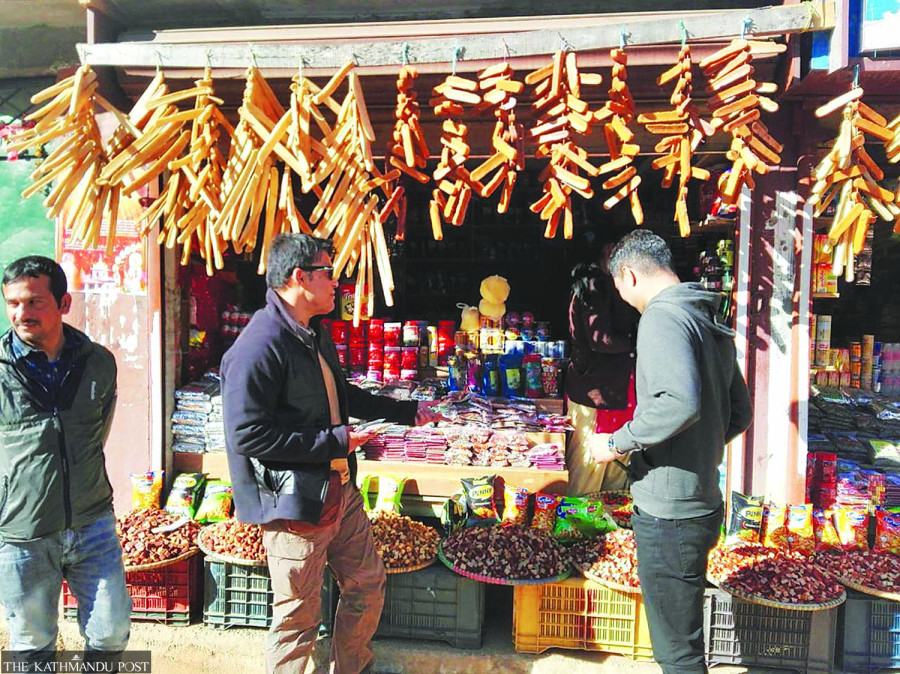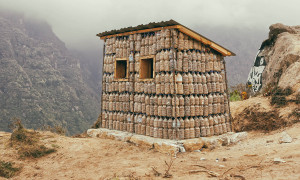Money
Nepal’s US trade preference at risk amid growing tariff tensions
As Nepal’s preferential trade access to the US nears expiration, a UN report highlights how erratic US tariff policies create barriers for vulnerable economies.
Post Report
New tariff tensions could further undermine the modest gains of least developed countries (LDCs), small island developing states (SIDS), and landlocked developing countries (LLDCs), according to a recent report.
The United Nations Conference on Trade and Development (UNCTAD), in its May publication titled “Sparing the Vulnerable: The Cost of New Tariff Burdens”, warns that these vulnerable economies could face some of the highest new US tariffs. This could lead to a decline in critical exports and pose substantial risks to their long-term development prospects.
The report defines “vulnerable economies” as LDCs, SIDS, and LLDCs—nations already struggling with structural economic and geographic disadvantages.
“US President Donald Trump is creating tariff uncertainty as a bargaining tactic in trade negotiations,” said Purushottam Ojha, a former commerce secretary. “There is uncertainty in US tariff policy, with new tariffs being imposed, suspended, and then reinstated without predictable patterns.”
Ojha noted that Nepal’s trade benefits under the Nepal Trade Preference Programme are set to expire this year, potentially creating new hurdles for exporting goods to the US market.
“This tariff uncertainty increases the cost of trade, which can have a wider impact on economies that heavily rely on imports,” he said. “The erratic US tariff policy is not a healthy sign for global trade.”
The US recently increased tariffs on steel and aluminium from 25 percent to 50 percent and imposed 45–50 percent tariffs on products from several countries, though these have been temporarily suspended for 90 days.
According to Ojha, one silver lining is that the tariff differential between Nepal and other countries has temporarily improved the competitiveness of Nepali goods. “But with the implementation of new US tariffs still unclear, it’s hard to rely on this advantage.”
In the last fiscal year, Nepal recorded a trade deficit of Rs2.16 billion with the US. According to the Department of Customs data, Nepal exported goods worth Rs17.31 billion to the US while imports totalled Rs19.48 billion.
Top Nepali exports to the US included carpets, dog chew, felt goods, readymade garments for men and women, ceramic goods, pashmina, essential oils, musical instruments, handmade paper, and cotton bags.
Meanwhile, Nepal imported items such as soybeans, coal, oil cake, aircraft and helicopter parts, printed software manuals, artificial filament tow of cellulose acetate, laboratory and diagnostic equipment, wood pulp, and almonds from the US.
The US introduced the Nepal Trade Preference Programme after the April 2015 earthquake, granting duty-free access to 77 items to support economic recovery. However, trade experts say the preferential treatment has failed to significantly boost exports.
The programme applies to 77 tariff lines: 56 textile products, 10 footwear items, nine clothing goods, and two fodder-related products.
According to reports, as of Thursday, the average effective US tariff rate stands at 15.1 percent, up sharply from the 2.5 percent rate before the recent rounds of tariff increases. This rise results from ongoing trade disputes and retaliatory measures, contributing to a highly complex and volatile trade environment.
Despite special provisions under multilateral trade rules, the participation of vulnerable economies in global trade remains minimal. They make up less than 0.5 percent of total US imports and contribute insignificantly to US tariff revenue or trade deficits.
According to the report, the least developed and landlocked developing countries account for only 1.3 percent of global exports—a figure that has largely remained unchanged over the past three decades.
This stagnation persists despite the Sustainable Development Goal (SDG) of significantly increasing the export share of developing countries, with a particular aim of doubling LDC exports by 2020. Instead, export growth for these nations has moved at a “snail’s pace” over the last 30 years, the report says.
Though the US market is critical for the exports of these vulnerable economies, their footprint remains small. The report states that LDCs account for 8.9 percent of total US exports and just 0.9 percent of US imports. Similarly, LLDCs buy 2.1 percent of US exports while supplying 0.2 percent of imports.
Regarding trade deficits, LDCs contribute 1.5 percent to the US deficit, while LLDCs have a negative contribution of 0.2 percent, meaning the US runs a trade surplus with them.
The report emphasizes that newly imposed US tariffs, which are layered and vary by the country, represent an added burden for these countries.
Under new US tariffs announced between January and mid-May 2025, a 10 percent tariff has been applied across the board, excluding Canada, Mexico, and China.
In 2023, the US imports from landlocked developing countries amounted to $6.2 billion. Of this, 59 percent of goods were subject to country-specific tariffs, while 41 percent enjoyed exemptions. Imports from least developed countries stood at $27.4 billion, with 93 percent falling under country-specific tariffs and only 7 percent exempt.
The exemptions mainly apply to primary goods such as vegetable products, footwear, foodstuffs, and headgear.
The report warns that LDCs will bear the brunt of these new tariff policies. The trade-weighted average tariff the US applies to imports from LDCs is 43.9 percent—far higher than the 7.3 percent tariff those countries impose on US exports. For LLDCs, the US applies an average tariff of 17.1 percent, compared to a 5.2 percent tariff on US exports.
The report concludes that shrinking preferential tariff margins threaten to erode export viability for dozens of vulnerable countries, potentially setting back years of slow but hard-earned progress in trade and development.




 15.12°C Kathmandu
15.12°C Kathmandu














